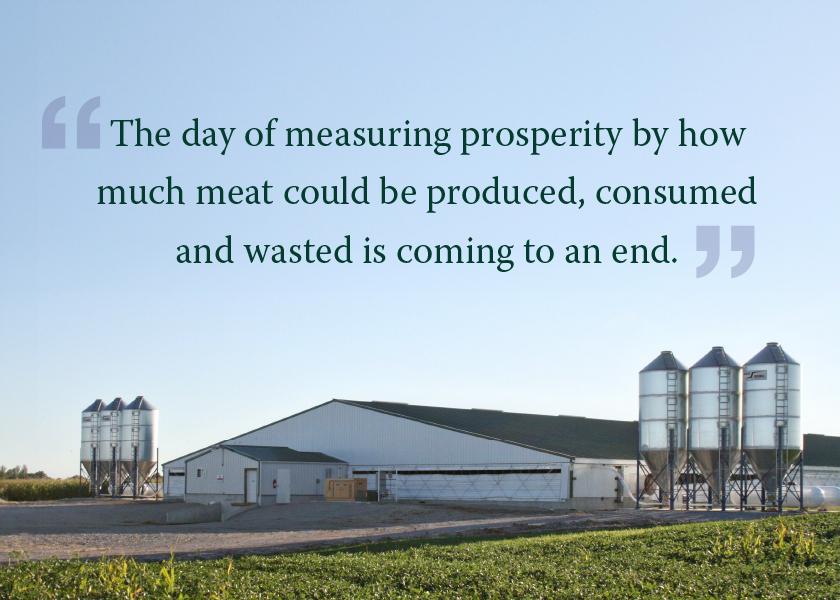What Will Drive Big Change and Profitability in the Future of the Pork Industry?

As we close out 2023 and look ahead to 2024, there are changes happening in the meat industry that are worthy of note. Not only do they tell us about the future of the meat industry, but they provide clues into what the pork industry can anticipate as it evolves to opportunities and challenges laid in its lap.
Two of the biggest evolutions underway are the increasing involvement of government as a power partner with large businesses and a shift in meat demand.
Government + Big Business
At least for the West, the relationship between government and large businesses opens a lot of doors and yes, there is a quid pro quo for those open doors paid back to government. This arrangement is driven by the movement to a fuller realization of globalism.
Globalism can be defined for business as the world being the new trading partner. Not every country has the same resource endowment, so for hundreds of years the basic truth of economic theory has described the way countries or regions organize their economic activity to produce those things for which they have the greatest advantage.
Each region or country will produce those things, including food that it can do at the lowest global cost and then trade the excess to areas which would require much greater global resources to generate an equivalent production. As an example, it is expensive to produce coffee in the U.S., so we send exports of chemicals, plastics, rubber and leather goods to Colombia, all of which we can make much cheaper than them and import coffee beans.
Since government acts on a global basis and makes treaties, having larger-scale businesses acting as partners can often execute the components of those agreements for the government. If that cooperation raises costs, government may give any number of paybacks from political access for non-monetary benefits to direct tax breaks to “payback” cooperative businesses.
The greatest example of that now is the emergence of ESG (Economic, Social and Government) policies adopted by business that directly or indirectly form the basis of this cooperation. A primary example in the pork industry is the decision to make sustainable production a national pork industry goal supported by metrics to measure progress and guidance including certifications to ensure reliable outcomes.
Changing Meat Demand
Very few in our industry have lived through a time when demand for meat fell on a per capita basis. However, that is now the case both globally and internationally. We are producing less globally because of the high cost of inputs and decreased purchasing power due to food inflation.
However, competent global forecasters are predicting a decline in global poultry production in the coming year. One need only look at the historical growth of poultry production and consumption to realize how the slowing of that juggernaut heralds a major shift in the world of food.
The day of measuring prosperity by how much meat could be produced, consumed and wasted is coming to an end. Culturally, less meat will be demanded for two important reasons: its perceived effect on health when consumed beyond the baseline requirement for protein and its effect on the environment.
For example, in the U.S., the recommended daily allowance (RDA) for meat protein is a modest 0.36 grams per pound of body weight. A 200-lb. man would require 72 grams per day. That’s 2.5 ounces. Forces will make strong efforts to move other western societies toward that goal though it is hard to imagine it will be fully realized.
Who Will Come Out on Top?
In the midst of these changes, a tsunami of efficiency improvements is building, led by the use of big data and application of tools available in machine learning. In this next major phase of pork production, early adopters of strong analytical data methods and the will to invest in data collection, management and deployment in models will be the big winners going forward.
There will always be tremendous opportunity in the pork and meat industry for creative, data-driven systems of production that the next generation will build. I have taken a sneak peak at what that looks like. I can tell you firsthand, it will drive big changes and profitability to our entrepreneurs of tomorrow. It is hard to imagine a world where U.S. pork production is not the global leader in real cost of production, quality and safety. That’s a stable three-legged stool that will be very difficult for another country to upend.
Read More:
Demand Mindset: Where Will Pork Production Go Now?
The Mythical Performance Curve for Net Sow Output
Reinvest in the Demand Attributes of Generation Z
Will Pork Weather the Recession Storm Ahead?







